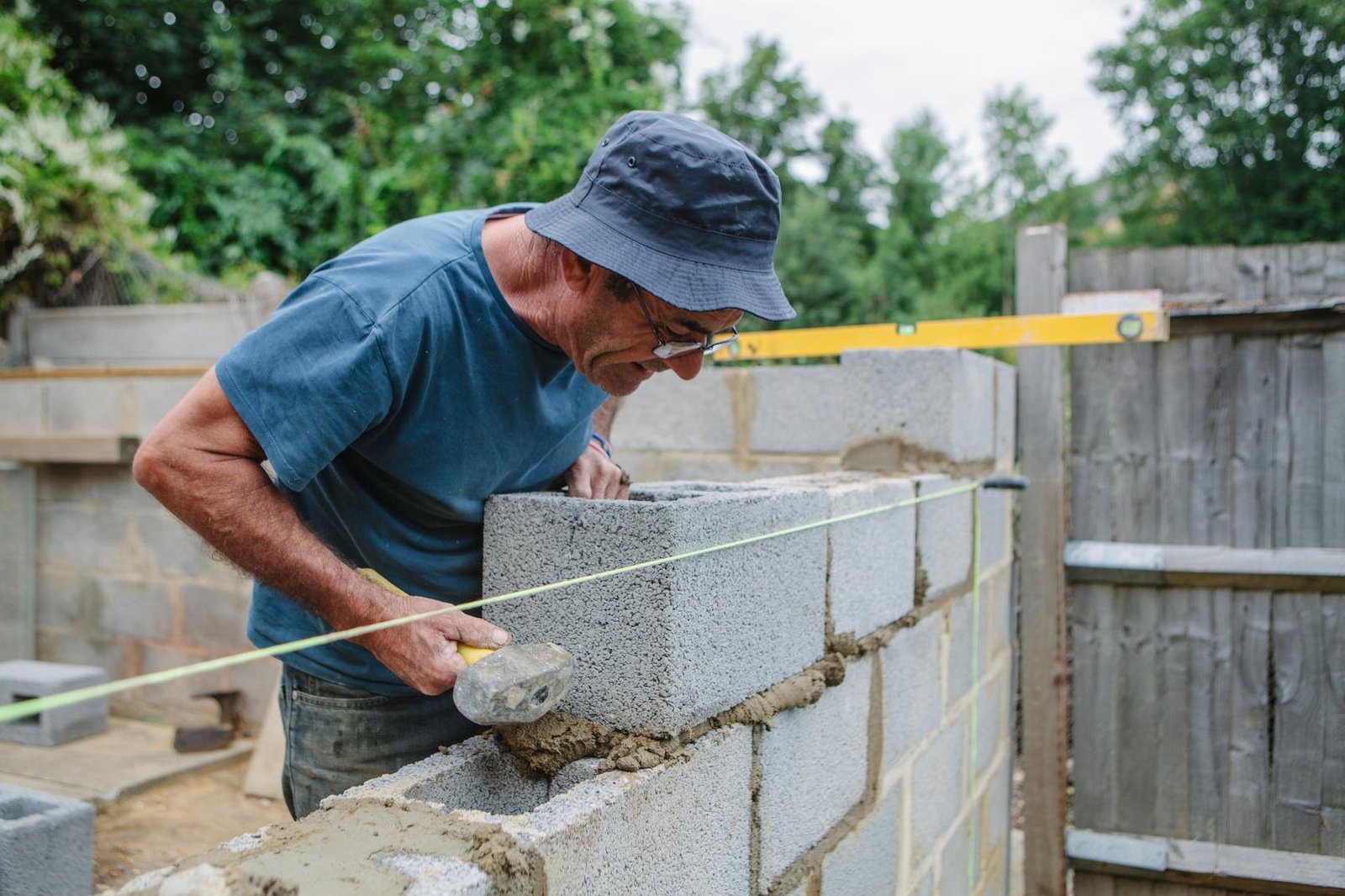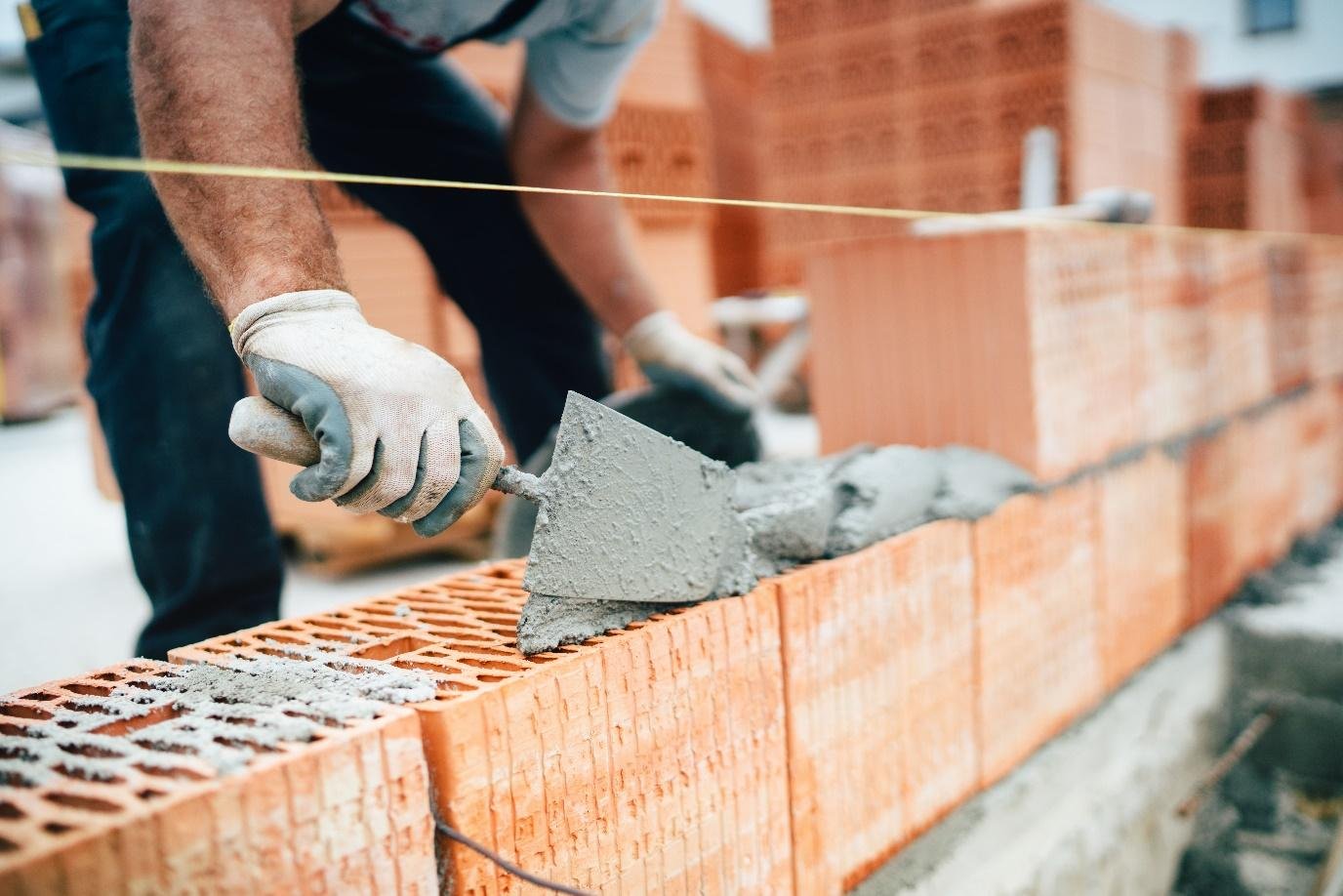Property owners who possess land next to another’s share a garden dividing wall known as a party fence wall. Building a party fence wall requires masonry that includes brick, concrete, or stone materials which separate the territories. The Party Wall etc. Act 1996 functions to both protect and resolve issues that involve shared walls.
The concept of a party fence wall provides essential information about its impact on land ownership. The regulations established by the Act ensure correct management of party walls together with party structures and other conditions.
The 1996 Party Wall etc Act excludes boundary walls completely installed on one property owner’s land, while including party fence walls as they are astride the legal boundary line.
Property owners need to understand the Party Wall Act as part of their exploration into party fence walls. According to the Act, building owners need to give neighbours at least 2-months notification prior to starting wall construction activities. This notice remains effective for one year after service.
Key Points
- Property owners share ownership of party fence walls which exist between their properties.
- The Party wall Act 1996 establishes a system which protects people from troubles regarding party wall ownership (see What is a Party Wall Dispute?).
- The definition of a party fence wall stands as a necessary point of understanding among property owners.
- Traditionally party fence walls consist of masonry construction materials.
- The co-owners maintain equal rights together with equal obligations to perform necessary maintenance and sustain other duties regarding the party fence wall.
- Building owners need to notify owners according to the Party Wall Act for planned party wall work at least 2 months before starting construction.
- Notices are valid within a 1-year timeframe.
Party Fence Wall Definition
Identities between neighbouring wall structures are governed by rules mentioned in the Party Wall Act 1996. The definition of a party fence wall describes any dividing wall separating multiple landowners without connection to buildings. The party fence wall exists astride property boundary lines.
The Act helps all parties determine their respective responsibilities for assisting building owners and their neighbours understand their rights and duties.
According to the Party Wall Act, both owners are responsible for maintaining party fence walls. A failure to comply with the Act may result in legal complications that enable neighbours to seek damages.
Party Fence Wall Characteristics
The essential qualities of a party fence wall include the following characteristics.
- Not within a building
- Built astride the boundary line between land owners
- Separate land areas
The definition of boundary walls differs since these stand on the property of just one landowner, but party fence walls are between multiple properties and owned by different owners.
Comprehension of party fence wall characteristics assists people in reducing neighbour conflicts that help comply with the requirements of the Party Wall Act 1996.
Party Fence Walls in UK Property Law: Historical Context
The practice of party fence walls exists through hundreds of years of history. The government established the first Party Wall Act in 1939 as a means to avoid and resolve conflicts related to party walls and structures.
The Act underwent significant modifications which finally resulted in the Party Wall Act 1996.
The provisions for party fence walls exist within the 1996 Party Wall Act in British property law, deriving previous sections from the original 1939 Act. The statute makes it obligatory for neighbours to share information about building projects which disturb shared structures or their adjacent locations. Work specified under the Act extends to properties held by the Crown and governmental entities and local authorities.
Important guidelines listed in the Party Wall Act 1996 include the following elements:
- The Act includes provisions about required notice procedures before performing party wall work.
- Consent procedures for adjoining owners
- The Party Wall Act 1996 describes specific times and dates for party wall notice responses.
Buried knowledge of party fence walls present within British law helps to avoid neighbourly disagreements. An outline of party wall law procedures exists in the accompanying table.
| Act | Year | Description |
|---|---|---|
| Party Walls Act | 1939 | Originally provided a framework to prevent and resolve disputes related to party wall work |
| Party Wall Act | 1996 | Amended the original Party Walls Act 1939 to include additional requirements and provisions |
Party Fence Wall Types in London
Modern party fence walls can be constructed from brick and stone as well as contemporary materials such as concrete and steel. The main determining factors for selection stem from visual appearance combined with material endurance and financial expense. Wooden fences are not classed as party fence walls, even if they have concrete posts.
These are the standard types of party fence wall constructions:
- brick and stone produces solid and traditional-looking walls which provide durability
- modern materials and designs, like concrete and steel
The price of fence structures built from different types of timber stays below brick and stone costs but fails to satisfy the definition of party fence walls.
Selecting a party fence wall material will need to consider function and monetary cost. An appropriate selection between materials will lead to a secure and attractive fence structure suitable for your land.
| Material | Advantages | Disadvantages |
|---|---|---|
| Brick and Stone | Traditional, durable construction | Heavy and costly |
| Modern Materials | Sleek and low upkeep | May not be suitable to all properties |
Party Fence Wall Owner Rights and Responsibilities
Your understanding about the rights and duties of party fence wall ownership will help guide your position. The Party Wall Act 1996 establishes rules with the goal of preventing and resolving disputes between neighbours regarding party walls. Owners of party fence walls are obligated to maintain a proper condition of their walls under legal requirements.
Party wall owners must inform their neighbours about intended work while obtaining necessary Party Wall agreements for particular construction activities. Party fence wall owners need to employ surveyors for preparing notices and drafting the necessary agreements for their projects.
- All owners must notify neighbouring residents when executing any maintenance or alterations to their party fence wall before starting the project.
- A Party Wall Agreement must be obtained to conduct activities that include wall cutting or height increase operations
- The service of a qualified surveyor involves preparing notifications and drafting agreements while arbitrating disputes through the mediation process.
Incompatible situations between neighbours occur because of their differences in handling rights and responsibilities. A Party Wall Surveyor must provide you with professional guidance about the Party Wall Act 1996 and additional information about the necessity of this expertise can be found at Do I Need a Party Wall Surveyor?
The understanding of your party wall rights and responsibilities will help you abide by legal provisions and limit conflicts with neighbours. For party wall guidance you should consult surveyors.
| Activity | Requirement |
|---|---|
| Cutting into the party wall | Party Wall Agreement needed |
| Raising the party wall height | Party Wall Agreement needed |
| Building a new wall on or astride the legal boundary | Party Wall Agreement needed |
| Excavating close to a neighbour’s foundations (3-6m) | Party Wall Agreement needed |
You may also be interested in What if you do not have a Party Wall Agreement?
Party Fence Wall Legal Requirements for Modifications
Understand the requirements of the Party Wall Act 1996 regarding party fence wall changes because it determines notice serving procedures and consent acquisition together with compliance timelines.
Before starting your project, you need to notify your neighbouring property owner between one to two months depending on your planned work activities.
The required notice procedures for party fence wall modifications are essential because their violation leads to possible injunctions. After being served with notice the neighbour has fourteen days to give their agreement. Joint expenses of wall maintenance will be split according to your mutual use of the wall following agreement between both property owners. You must share the wall expenses only when your neighbour uses the wall or repairs are required for safety.
Consent Procedures and Notice Requirements
Under the 1996 Party Wall Act, regulations apply to modifications to UK party fence walls.
Proper execution of notice requirements and consent/dispute activities protects you from problems and notice of works to party structures need to be served two months before project commencement.
During work operations, you as the building owner must bear all costs connected to neighbouring property damage. A person has the right to conduct maintenance and repairs when a party wall or fence shows signs of damage.
A party fence wall can be redcued to a minimum 2 meters in height.
Deadlines and Timeframes
There are essential points that must be considered when making changes to party fence walls which include the following:
- Before making alterations to a party wall, the law requires you to notify neighbouring owners two months in advance.
- The owner should try to get consent from neighbouring owners within a fourteen-day period.
- Buildings projects must keep to the time requirements mentioned in the Party Wall Act 1996.
- The building owner needs to provide sufficient compensation for property damage caused to their neighbours after changes to the party fence wall.
Disputes Resolution Methods in London
Current disagreements regarding party fence walls typically arise from the relationship between two neighbouring building owners. The Party Wall Act 1996 requires knowledge of specific solutions that include party wall surveyor services and mediation procedures.
Amicable relations between neighbours suffer mainly due to disputes concerning fences, walls, hedges, plants and access entries. The start of these issues typically occurs from new residents or modified property practices or construction activities. The effective solutions for these issues include open dialogue as well as prompt communication and seeking expert assistance.
A party wall surveyor will be brought in whenever parties fail to resolve their conflicts. Two surveyors who can not reach consensus may refer matters to a Third Surveyor to decide the outcome. Anyone facing a legal court case should consult a lawyer, but the Party Wall Act functions to prevent such cases. Both parties must handle party wall notices promptly to stop any deterioration in their situation.
The Party Wall Act 1996 represents the essential measure to prevent party fence wall disputes. Work on the wall needs to start at least two months after giving proper notice to the concerned parties. A neighbour who does not reply to a notification in 14 days will be treated as having a dispute. Knowing successful methods to resolve these conflicts enables all participants to find solutions. Some interesting statistics include:
- The statistics show that greater than 20% of UK homeowners experienced conflicts with their neighbours regarding property fence boundaries.
- The number of Britons who engaged in boundary conflicts reached over 6 million during 2022.
- On average the disputed area takes up 2% of typical garden space.
Obligations for Maintenance and Repair
Building owners together with those who hold properties adjacent to these structures must understand party fence wall maintenance duties.
Each party in a wall or fence agreement must follow the rules set by the Party Wall etc. Act 1996 that dictate joint maintenance requirements and cost-sharing arrangements together with emergency response provisions. The Act stipulates under Section 2 that parties need to collaborate for maintenance and improvement efforts on their shared walls.
It is concerning how much money will be needed to manage party fence walls. Before consulting surveyors both parties can discuss costs effectively to resolve disputes about who will pay for maintenance. The parties involved must understand each of their respective responsibilities regarding repairs.
Shared Maintenance Responsibilities
Maintaining party fence walls jointly proves necessary for public safety. Section 10 of the Act provides for the appointment of a surveyor jointly or independently. The procedure enables problem identification and facilitates proper execution of repair tasks.
Cost Guidelines
The procedure includes cost-sharing guidelines which the surveyor(s) will quantify. The Party Wall Surveyor determines both the responsible party and the payment cost for necessary repairs. The party responsible for damage that occurs during the process will be required to provide payment through the addendum award.
Understanding what your responsibilities are in maintaining party fences allows avoidance of hostile disagreements. The repair process follows the Party Wall etc. Act 1996 by dividing expenses fairly and performing work to industry benchmarks while owners must fulfil their repair duties.
You should also consider information in this article on Party Wall Surveyor Cost Analysis: How much does a Party Wall Agreement Cost?
Planning Permission and Building Regulations
The Party Wall Act 1996 functions as a facilitative law which allows homeowners in the UK to carry out fence works under specific conditions.
A homeowner needs planning authorisation to build new structures and extend specifically in cases involving buildings with Listing status or located near Listed Buildings. Obtaining planning approval does not eliminate the need to implement Party Wall etc. Act 1996 according to its specified conditions.
The Party Wall Act 1996 allows party fence walls to reach specified height criteria. According to regulations, fences located by roads or footpaths should measure no taller than one metre. Fences in areas away from these elements need to measure at least 2 metres in height. The height restriction allows owners to increase the dimensions of their existing small fences, walls, and gates.
People should note these key points when applying for planning permission to construct party fence walls:
- Property owners require planning consent when operating on Listed properties or any buildings located in proximity to Listed Buildings.
- Any attempt to build a new fence wall requires valid permission from the appropriate authorities.
- You would need planning permission together with party wall consent to remove a fence wall specifically in Conservation Area buildings.
Learning about regulatory standards for party fence walls along with planning permission requirements for your property leads to both legal compliance and minimising of risks.
Professional Support and Expert Surveyor Advice in London
A party fence wall surveyor acts as the essential source of expert advice required to handle party fence wall issues. The Party Wall etc. Act 1996 requires this advice in order to settle disputes effectively.
A surveyor assists with drafting and serving party wall notices while also providing guidance to handle disagreements in order to help you maintain neighbourly relations. The Greater London area particularly requires expert guidance because more than 1.5 million homes experience this problem.
Benefits of Expert Advice
- Risk of disputes reduced by est. 70%
- Neighbourly relations improved
- Party Wall etc. Act 1996 compliance
- Notice requirements and consent procedures guidance provided
Working with a party fence wall surveyor allows you to benefit from professional advice that produces proper handling of building modifications and dispute resolution. By seeking professional advice, you safeguard your rights from possible problems while simultaneously getting better control of your work projects. Proper advice enables you to perform well under party fence wall regulations.
Considerations on Liability and Insurance
Party fence wall maintenance requires you to handle party fence wall insurance coverage along with liability risks properly. The protection of your financial assets from next-door property damage claims requires building owners to secure suitable party fence wall insurance.
Several key points exist regarding insurance together with liability responsibilities of party fence walls:
- Party wall notices alongside party structure and party fence wall work notices must have a minimum 2-month period starting from notice delivery.
- All adjoining owners have two weeks to reply after receiving the notice.
- The excavation works located within 3 meters of an adjoining structure requires notice if the depth is shallower than the foundations of the neighbouring structure.
The expenses associated with repairs and construction are influenced significantly by liability factors. Getting sufficient party fence wall insurance coverage allows you to pay for next door property damage repairs that might occur throughout the work process.
Many homeowners remain in the dark about the Party Wall Act and their related obligations with only 60% of them understanding their rights accordingly. The absence of knowledge results in extra disputes together with prolonged resolution durations. The necessity of handling potential liabilities therefore requires an adequate part wall agreement insurance solution.
Conclusion: Managing Your Party Fence Wall Effectively
When managing party fence walls you must follow the Party Wall Act 1996 through proper appreciation of responsibilities between parties to both complete projects smoothly without disputes.
The Act provides guidelines about notifying neighbours together with instructions to get their approval and how to handle any arising disagreements. Your legal compliance through pre-planning and rule-following makes your fence wall works compliant while producing better relationships with surrounding neighbours.
Speaking with a party wall surveyor becomes essential whenever you perform construction or maintenance work. Party wall surveyors possess knowledge regarding party wall legislation which enables them to provide appropriate care for your fence wall’s maintenance.
FAQ
What is a party fence wall?
Under the Party Wall Act 1996, a party fence wall exists when separate landowners share ownership of such a structure. A party fence wall stands independently astride the boundary separating lands under different ownership.
What is the difference between a party fence wall and a boundary wall?
A party fence wall shares characteristics with boundary walls which both distinctively separate properties. However, a boundary wall sits on one owner’s side, whereas a party fence wall sits on both (i.e. astride the legal boundary line).
What are the key characteristics of a party fence wall?
A party fence wall exists astride the land division boundary and it is not part of any building structure. It serves as a dividing structure between these properties and is owned by both owners.
What are the different types of party fence wall structures?
A party fence wall needs to be constructed with masonry to qualify. A party fence wall may consist of brick along with stone materials and/or contemporary building products, but wood-based constructions do not qualify since they represent mere fences. The different party fence wall varieties come with distinct sets of advantages and disadvantages.
What are the rights and responsibilities of party fence wall owners?
Owners who possess jointly shared walls must uphold its condition and perform maintenance according to the Party Wall Act 1996. Getting familiar with all aspects of party fence wall ownership remains essential for owners.
What are the legal requirements for modifying a party fence wall?
Under the Party Wall Act 1996, regulations exist for altering party fence walls. All modifications to party fence walls must start with serving notice to obtain consent while respecting specified time limits.
How are disputes over party fence walls resolved?
Through the framework established by the Party Wall Act 1996, disagreements can be effectively resolved. The process requires selection of party wall surveyors and the exercise of their authorised decision-making powers.
What are the maintenance and repair obligations for party fence walls?
The Party Wall Act 1996 defines the maintenance obligations that neighbours must share between them while also explaining how costs should be distributed and emergency repair procedures carried out for party fence walls. This legislation specifies how costs should be defrayed and describes what is required to perform emergency repairs of party fence walls.
Do I need planning permission to modify a party fence wall?
You must obtain planning authorisation for modifications together with a Party Wall Award that follows the Party Wall Act 1996 rules. The requirements under the Act affect new constructions and additions in relation to any work concerning party fence walls.
When should I consult a party wall surveyor?
Defending party fence wall matters requires specialised assistance because of their legal importance. Qualified/experienced party wall surveyors specialising in the Party Wall Act 1996 will help people deal with their party wall disputes, such as through their membership to the Faculty of Party Wall Surveyors (FPWS).
What are the insurance and liability considerations for party fence walls?
Being a party fence wall owner requires thoughts about insurance coverage and liability responsibilities. Eligible party fence wall owners need sufficient insurance protection.
 Skip to content
Skip to content






